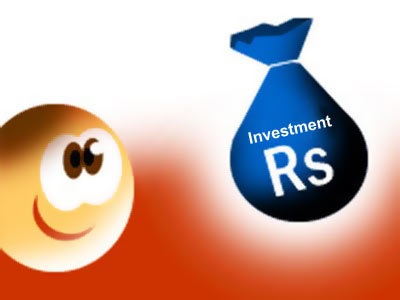 | « Back to article | Print this article |
Why PF is the safest form of investment
For professionals, new pension scheme gives an equity booster but does not guarantee returns, comes at a cost.
Fifty-year-old Ghanshyam Prasad recently quit from his full-time job of 25 years and set up his own consultancy firm.
He doesn't want a break in his investments towards his retirement corpus.
Prasad has been considering the idea of creating his retirement funds through the new pension system.
But financial planners unanimously suggest Prasad must increase his contribution towards the Public Provident Fund.
Why?
"There is a risk here, as he is in his 50s. Also, starting off with a new venture is risky, in terms of the business not doing well. And, if he goes belly up, NPS can get attached to pay off his debt, whereas PPF cannot be touched," says an official from Bajaj Capital.
Click NEXT to read further. . .
Why PF is the safest form of investment
Till now, he has accumulated Rs 10 lakh (Rs 1 million) in his Employee Provident Fund account.
Since Prasad's is a new business, he requires liquidity as well.
And, PPF is more liquid. The good part is that Prasad has been investing in PPF for 10 years.
PPF is a 15-year instrument with a lock-in of six years, after which you can withdraw half the corpus each year.
Even if Prasad had to open a PPF account now, he would have to wait only for six years to withdraw 50 per cent of his savings.
On the other hand, NPS allows only 20 per cent to be withdrawn as lump sum, before you turn 60. The remaining amount will be used to buy annuity, which will be earned as pension.
After 60, you have to invest a minimum 40 per cent of the accumulated savings to buy an annuity from any life insurance company.
Click NEXT to read further. . .
Why PF is the safest form of investment
The remaining can either be withdrawn in lump sum or in a phased manner, between age 60 and 70, at the will of the subscriber.
Prasad plans to hang his boots at 60 and let his son take care of the business.
"Given he has 10 years to go, he could also look at a balanced fund for the equity booster to his retirement corpus and debt protection," says a financial planner.
A balanced fund invests up to 65 per cent in equities and the remaining in debt.
However, certified financial planner Gaurav Mashruwala has another set of apprehensions about NPS.
The product gave good returns of up to 12 per cent last year, but it does not guarantee returns.
The returns depend on the performance of the seven designated pension funds.
Click NEXT to read further. . .
Why PF is the safest form of investment
And, the highest returns will come only from the equity scheme that invests up to 50 per cent in equity through an index fund.
Instead, PPF could be a good option, with guaranteed eight per cent returns.
The scheme Asset Class E invests in equities or index funds that mirror the broader indices such as the Sensex or Nifty, capped at 50 per cent of the investment.
The remaining amount will be invested in securities.
But financial planners are not enthused by the product because although NPS is better than EPF and PPF, pure equity products score much more than NPS.
On an average, open-ended equity mutual funds will return 15 per cent, as against nine to 10 per cent from NPS.
Click NEXT to read further. . .
Why PF is the safest form of investment
Mashruwala suggests 28-year-old Nimisha Lamba invests in equity mutual funds through systematic investment plans to make up for a retirement kitty.
She could start with either a balanced fund or an equity-diversified fund.
Lamba works for an architecture firm as a professional, which means she does not get an EPF deduction.
And, in the absence of tax-free EPF, she was contemplating investing in NPS.
Since Lamba will retire at least 25 years from now, equity could help create a bigger corpus, with a higher upside compared to debt products such as PPF or NPS.
"If you opt for equity-linked savings schemes, according to current provisions there are tax benefits available. There is no long-term capital gains tax on equity, anyway," says Mashruwala.
Also, there is a cost involved with opening and investing in an NPS account.
Click NEXT to read further. . .
Why PF is the safest form of investment
The Central Recordkeeping Agency charges Rs 50 as opening fee, Rs 280 for maintenance and Rs 6 per transaction.
Initial subscription cost will be Rs 40, lowered to Rs 20 for subsequent transactions.
Last, the asset servicing charge is 0.0075 per cent and fund management charge is 0.0009 per cent, annually.
At the same time, there is no cost to opening a PPF account.
"If you are 15-20 years away from retirement, up to 100 per cent in equities is a better deal," says Kartik Jhaveri of Transcend Consulting.
He advises pure debt products like PPF if you are less than 10 years away from retirement.






